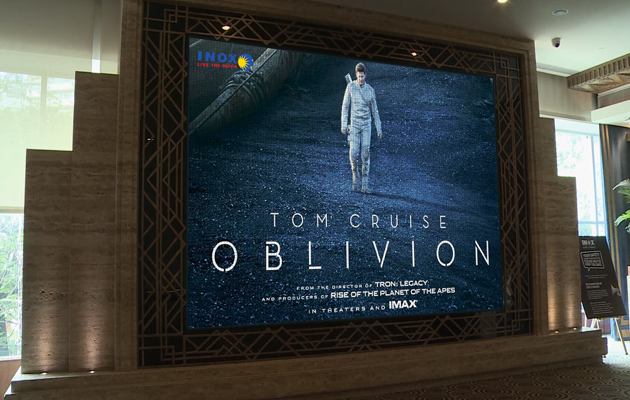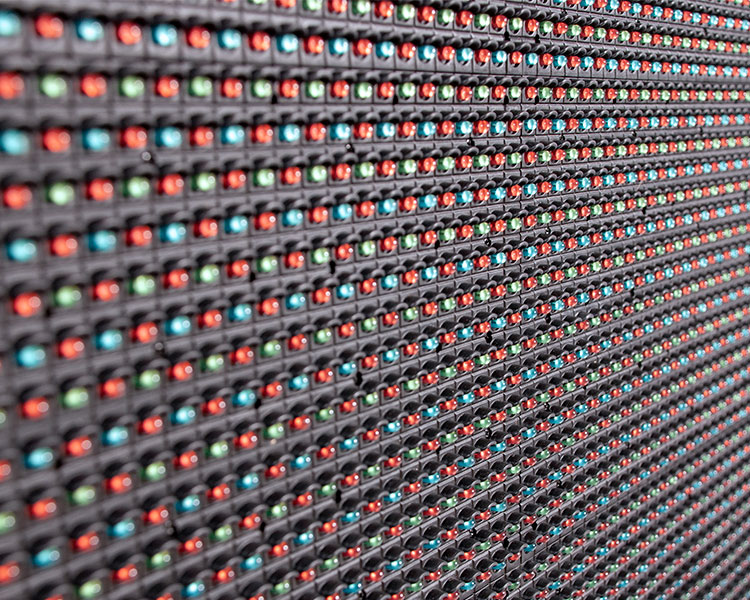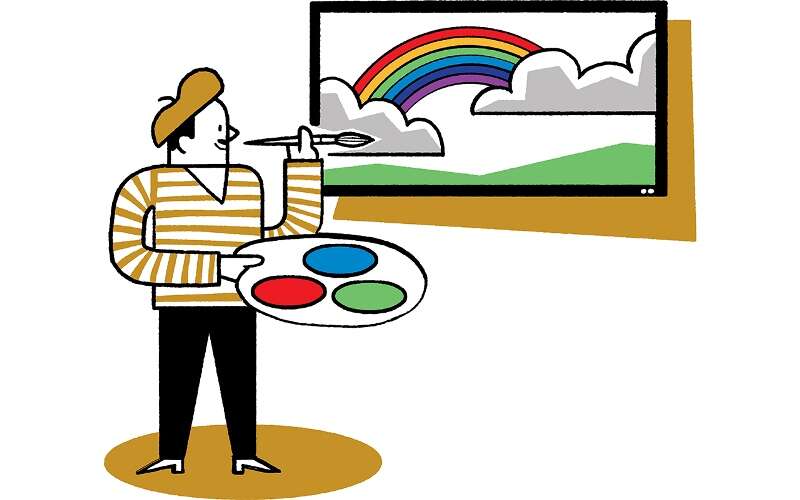Best Facts On Deciding On Flexible Led Panels
Best Facts On Deciding On Flexible Led Panels
Blog Article
What Is The Significance Of Pixel Pitch And Resolution When Looking Into Led Displays?
Pixel resolution and pitch are incredibly important factors when looking into LED displays. These two elements directly impact the clarity and quality of the display, and also the overall visual experience. Here's why these two elements have a bearing on the overall experience:
1. Image Quality
Pixel Pitch is the distance from the center LED pixel to that of the next. A smaller Pixel Pitch indicates that the pixels are larger, leading to higher resolution and a greater pixel density. This results in sharper, more detailed images, especially important for content with high-quality text or fine details.
Resolution: The resolution is the number of pixels in the display. It's usually expressed as width x height e.g. 1920x1080. A higher resolution permits more detail to be displayed and provides a more immersive experience. This is crucial for large-screens, as the viewer is close to the screen.
2. Viewing Distance
The optimal viewing distance is closely tied to the pixel pitch. For displays that are seen from a distance, such as indoor screens or those used in exhibitions or retail displays having a lower pixel pitch (and consequently a greater resolution) is crucial to prevent pixelated images. However, outdoor large-scale display screens and billboards that are seen from the distance may benefit from a pixel pitch that is smaller, since the individual pixels are smaller and less noticeable.
3. Content Versatility
Displays that have smaller pixels and higher resolutions can show a variety of content. This includes high-definition films complex graphics, as well as small text. This flexibility is essential for applications that require dynamic content, such as digital signage, broadcast studios or control rooms.
4. Cost implications
The cost of a display will increase significantly when the pixel pitch is decreased. The price of making screens with higher resolutions is greater due to the greater number of LEDs that must be used. To achieve the ideal balance between price and high resolution it is important to consider the requirements as well as your distance to the screen.
5. Application Specificity
The significance and value of the pixel pitch will vary according to the software you're using
Indoor Displays require smaller pixels (e.g. between 1.2mm all the way to 2.5mm) in order to guarantee high quality at close-up viewing distances.
Outdoor displays: They can feature a higher pixels (e.g. 4mm to 10mm), because they will be seen from greater distances. Resolution is not so important.
6. The longevity and upgradeability
Pixel pitch is shrinking as display technology advances. This permits greater resolution and smaller sizes. If you purchase a screen that has an optimal pixel-pitch will lower the requirement to upgrade often and guarantee the effectiveness of your display for a long time.
Conclusion:
Pixel resolution and pitch are crucial in making the best use of LED displays, especially in relation to image quality, viewing experiences and flexibility of content. To select the ideal LED display for your project budget, budget, and market, you must carefully take into account all these aspects. Read the most popular 3d led display for site examples including video wall tv, rental led display screen, outdoor display led, advertising displays, flexible led screen display, led screen panels, led screen rental, screen led display, led wall tv, led transparent display and more.
How Important Is Portability And Weight When Researching Led Displays?
When looking into LED displays, the weight and portability are crucial elements to be considered, especially for applications that require flexibility as well as ease of installation and transport. These aspects are crucial:
1. Installing and setting up is easy
Weight: A lighter LED display is easier to move around when it is installed particularly when the display is installed in a location in which it has to mount on the roof, walls or some other structure. Installation of large displays can be complicated and costly as they require strong support systems.
Portable Displays are perfect for trade shows, temporary installations and events. They are easy to put up and taken down. The lightweight design allows them to be easily transported and setup to save time and energy.
2. Rental and Staging
The LED panels should be lightweight and easily portable for the markets of rental as well as stage where displays are often moved from place to place. They are light and mobile, allowing an easier turnaround time between shows. They also reduce transportation costs and minimize the chance that they could be damaged during handling.
Modularity: Displays that are portable and have LEDs are typically modular, allowing them to be assembled and disassembled effortlessly. The flexibility of the display is essential to creating custom configurations to meet event requirements.
3. The structural requirements
Support Structures. Large LED displays will require more complicated and robust mount structures. This could add to the price and the complexity. In contrast, lighter displays are supported by simpler, less expensive structures, making them more versatile in different environments.
Venue Constraints Certain venues have weight restrictions on their structures. This may be the case with ceiling or wall mounts. A lightweight display will ensure that you are able to accommodate the installation without exceeding the weight limit.
4. Transport and Logistics
Shipping Costs The weight of LED displays directly influences the cost of shipping and handling. The lighter the display, the cheaper shipping costs are. This is especially true for large deployments or international transport.
Storage and Handling: Portable and lightweight displays are more convenient to store and move around which requires less space and a simpler logistics process, which can be crucial for companies that frequently transport displays to different places.
5. Flexibility of Use
Reconfigurability Portable and lightweight displays are often made of modular components, which allow the reconfiguration of various sizes and shapes to suit different applications. This is very beneficial in installations that require it is vital to be flexible in design.
Applications Versatility These displays are able to be used in many different settings, from pop-up events for small groups to large outdoor performances. This isn't achievable with bigger displays.
6. Safety Considerations
Lighter Displays Reduce Risk: They are safer to handle and install and install, which means there is less chance of accident or damage. This is particularly crucial in situations where the display will be frequently altered or moved.
Compliance: In some cases, safety regulations may dictate weight limits for installations especially in public spaces. To ensure compliance, it is important to make sure that the display meets the standards.
7. Energy Efficiency
Although they are not directly tied to weight Displays that are light are often designed for energy efficiency. LED displays that are portable use less power, which may be a benefit for environments with limited electricity or where the operating expenses are significant.
Conclusion:
LED displays must be light and portable. This is important, especially for applications in which they are often moved, such as temporary settings or in locations with limited structural support. These aspects affect not just installation and transport but also the flexibility and safety, as well as the overall cost. It's important that you prioritize portability and weight when researching LED displays if the application includes frequent movement, fast setup, or compliance to specific structural or safety standards. Check out the top rated led rental screen for more advice including advertising tvs, rental led display screen, led board rental, led display, transparent led display screen, advertising tvs, monitor transparent, flexible led display screen, led screen panels, display led outdoor and more.
How Important Are Cost, Roi, And The Efficiency Of Led Displays When Researching Led Displays?
Cost as well as ROI (Return on investment) and energy efficiency are highly crucial when it comes to researching LED displays since they directly impact the viability of financial investment in the long run, as well as operational costs of the investment. This is the reason why each one of these aspects matters:
1. Initial Cost
Budget considerations: The initial price of buying LED displays is an important factor for any project. It includes not just the price of an LED display, but also costs for mounting, installation and other accessories.
Quality and. Cost: Although cheaper displays initially appear attractive however, they can compromise on features, durability, and quality. The initial price should be weighed against the durability and performance of the display.
Application: When budgets are limited, a careful evaluation of performance versus cost is essential. For example, high-end displays could be required for crucial applications, such as advertising in prime locations while cheaper alternatives may be sufficient for less demanding environments.
2. Return on Investment
Revenue Generating: ROI is usually related to the capability of LED displays to create income. It could be by advertisements, customer engagement or brand visibility. Displays that are able to create compelling content that captures the attention of customers can yield a high ROI in terms of advertising and sales.
Durability and Longevity: High-quality displays with greater durability and longer life expectancy typically provide greater ROI since they require less frequent replacement and lower maintenance costs over time. It is possible to cut down on costs in the long run by investing more upfront.
Impact of Features on ROI: Features such as high brightness, large viewing angles and high resolution resolution could increase the initial costs however, they could also improve audience engagement, resulting in an increase in return on investment.
3. Energy Efficiency
Operational Costs Efficiency of energy is a key element in reducing operating costs for an LED display. The lower electricity costs result from displays that use less power. This is particularly important for large installations and displays which are operational continuously.
Environmental Impact Displays that are energy efficient reduce carbon footprints and contribute to sustainability. It is becoming increasingly important for organizations and businesses that have a strong commitment to sustainability or have to comply with the regulations on energy.
Long-term Savings - While an displays that are energy efficient may cost more initially, the savings in electricity over the life span of the display are significant and can boost the ROI.
Energy efficiency is a great way to reduce the overall operating cost of installations in areas that have high energy prices or large-scale deployments.
4. Cost of Ownership Total Cost of Ownership
Maintenance and repairs Repairs and maintenance ownership do not just include the cost of the item, but any repair, maintenance or downtime that might be required. TCO is usually lower for displays that are durable and last for longer, which makes them a better long-term investment.
Upgrades and Scalability. Take into consideration the ability to scale or upgrade the display. A modular display that is able to be upgraded or expanded with minimal costs can be a good long-term investment.
Displays to be used: If the displays are planned to be used for several years in settings like public spaces or in corporate settings with a lot of traffic, the TCO is crucial to ensure that the investment will remain cost-effective.
The Financing Options
Flexibility in Financing: Many providers offer leasing or financing options that aid in managing the initial costs associated with quality displays. This is especially beneficial for companies who want to invest in digital signage, but keep their cash flow.
The return on investment of leasing options is also able to have an impact on the return on investment. Leasing lets businesses upgrade technology to newer models without the need to invest a lot of money.
6. Market Competitiveness
Cost vs. Cost and ROI can impact your ability to compete in the market. A higher-quality display can help you to stand out from the competition, attracting clients and more customers.
Application: In highly competitive sectors like entertainment or retail industry investing in higher-quality, more efficient displays that offer higher ROI may provide you with a significant advantage.
Conclusion:
To assess the value and benefits of an investment in a LED screen it is crucial to take into account factors like cost as well as ROI and energy efficiency. The performance of the display will be improved by balancing the initial cost with anticipated returns on the investment. It is important to consider these aspects in deciding on a display that is in line with your budget objectives as well as your long-term strategy and operational goals. Have a look at the best flexible advertising boards for more tips including transparent led screen, led video wall, monitor transparent, led screen, church video wall, transparent display monitor, display screens, led video wall, wall screen, outdoor display led and more. 